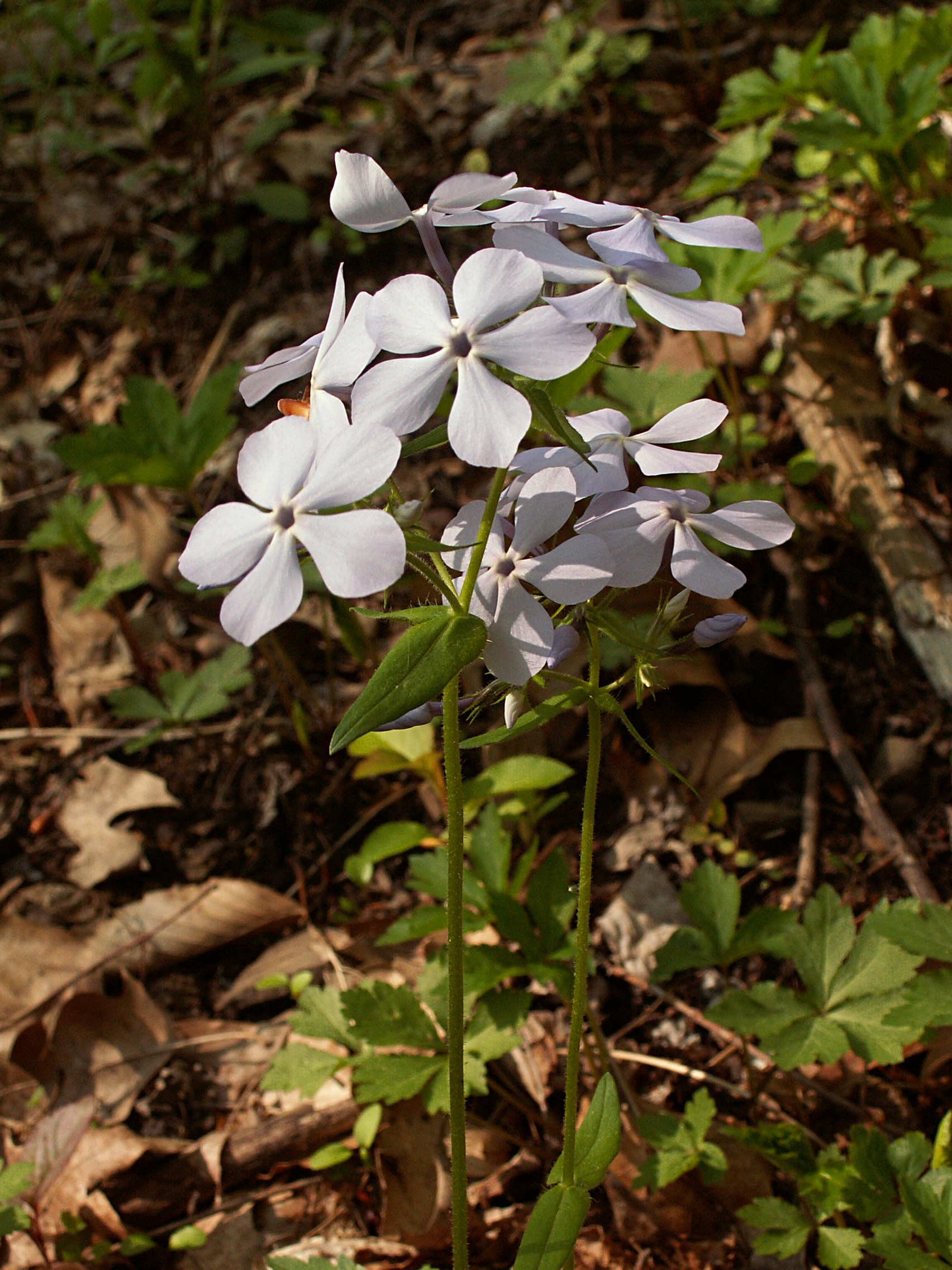 Blue Phlox is certainly one of our most ornamental woodland flowers, and a garden treasure as well. These plants were blooming in early May in Bird Park, Mount Lebanon, where you can find great drifts of Blue Phlox on the wooded hillside overlooking the field.
Blue Phlox is certainly one of our most ornamental woodland flowers, and a garden treasure as well. These plants were blooming in early May in Bird Park, Mount Lebanon, where you can find great drifts of Blue Phlox on the wooded hillside overlooking the field.
In the picture at the top of the article, note the occasional four-petaled flower.
Gray describes the genus and the species:
PHLOX L. Calyx somewhat prismatic, or plaited and angled. Corolla with a long tube. Stamens very unequally inserted in the tube of the corolla, included. Capsule ovoid, with sometimes 2 ovules but ripening only a single seed in each cell. — Perennials (except a few southern species), with opposite and sessile perfectly entire leaves, the floral often alternate. Flowers cymose, mostly bracted; the open clusters terminal or crowded in the upper axils. (Phlox, flame, an ancient name of Lychnis, transferred to this North American genus.) Most of our species are cultivated in gardens.
Herbaceous, with flat (broad or narrow) leaves.
Stems, at least the flowering ones, ascending or erect; flowers in corymbed or simple cymes; corolla-lobes obovate or obcordate.
Calyx-teeth long and slender; more or less hairy or glandular-pubescent.
Leafy shoots from the base creeping or decumbent; leaves rather broad.
P. divaricata L. (BLUE PHLOX.) Stems spreading or ascending from a decumbent base, 2-5 dm. high; leaves oblong- or lance-ovate or the lower oblong-lanceolate, 2-6 cm. long, acutish; cyme corymbose-panicled, spreading, loosely flowered; calyx-teeth slender awl-Shaped, longer than the tube; lobes of the pale lilac or bluish corolla obcordate or wedge-obovate and notched at the end, or often entire, equaling or longer than the tube, with rather wide sinuses between them. — Rocky damp woods, w. Que. to Minn., and south w. May, June — A form occurs near Crawfordsville, Ind., with reduced flowers, the narrow entire acuminate corolla-lobes scarcely half as long as the tube.



